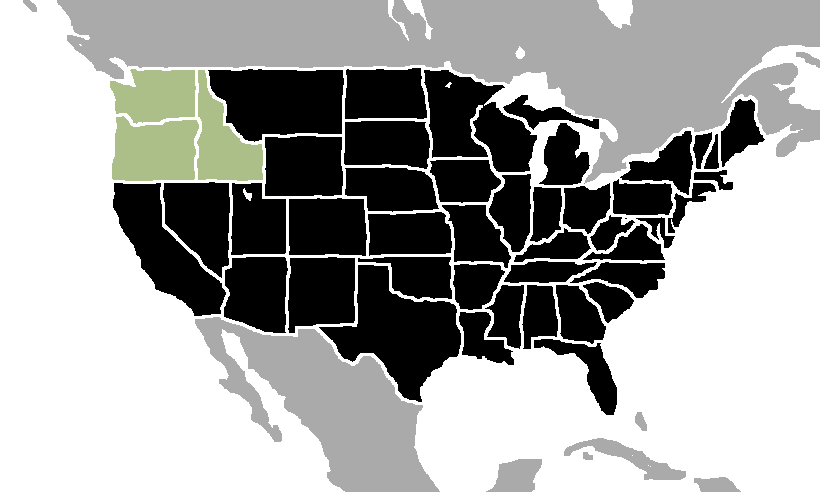Cascade Hops

Alpha Acids (%)
5.5 - 7.5
Description
This classic American aroma-type cultivar is very popular with craft brewers in the US. Moderate alpha-acid content also makes them reasonably effective for bittering. They are well known for their citrusy and floral characteristics. Cascade hops are frequently noted for imparting a distinctive grapefruit aroma and flavor. Although, this grapefruit character is also found to some degree in Centennial, Columbus, and Amarillo hops. Cascade may also produce some spicy and grassy notes particularly when used for late boil additions and dry-hopping.
Cascade hops have very high concentrations of the essential oil myrcene. This is probably in large part responsible for the citrus flavors. They also have comparatively high farnesene content which is only found in miniscule amounts in most hop cultivars. Cascade also has humulene content similar to some of the Noble Hops. The humulene likely produces some of the floral character.
Possible Substitutes
Amarillo, Ahtanum, and possibly Willamette could be substituted for Cascade when used for hop aroma. Amarillo and Ahtanum are both moderate alpha-acid hops known for similar floral and citrus characteristics. Additionally, they have similar essential oil profiles with high myrcene and farnesene. Willamette shares some ancestry with Cascade, both are descended from Fuggles. Willamette has some similar flavors to Cascade although it differs by having a less pronounced citrus character.
Centennial, possibly Columbus, or possibly Horizon could be substituted for Cascade when used for bitterness. All of these varieties have some citrus character paired with substantial alpha-acids. Centennial in particular is noted for it's similarities to Cascade, sometimes considered a higher alpha-acid version of Cascade.
Beer Styles
Cascade hops are commonly used in many types of American ales. Although, they are strongly associated with pale ale, IPA, brown ale, and of course Cascadian dark ale. They also see some use in American lagers. Due to their citrus character they work well in American-style wheat beers. They are sometimes used in English ales in particular bitter and pale ale. Belgian-style pale ales and IPAs may combine Belgian yeast with Cascade or other American hops.
Chemical Composition
| Alpha Acids: | 5.5 - 7.5 | % |
| Beta Acids: | 5.8 - 7.0 | % |
| Alpha:Beta Ratio: | 1 | |
| Cohumulone: | 31 - 36 | (% alpha-acids) |
| Essential Oils: | 0.8 - 1.5 | % |
| Myrcene: | 45 - 60 | (% essential oils) |
| Caryophyllene: | 4.6 - 6.9 | (% essential oils) |
| Humulene: | 11.8 - 15.7 | (% essential oils) |
| Farnesene: | 5 - 7.5 | (% essential oils) |
All chemical composition values aggregated from [2] and [3] where available.
Origin and Genetics
Cascade was an early success of the USDA hop breeding program at Oregon State University in Corvallis, Oregon. They are named "Cascade" for the prominent Cascade Mountain Range that runs through the states of California, Oregon, and Washington. They were the first American-bred hop cultivar released for production after Prohibition.
Cascade was found as a chance seedling in 1956 by Dr. Stan Brooks of Oregon State. [4] After being noticed and collected for propagation, it was assigned USDA accession number 56013. The female side of the pedigree is known to be (USDA 19124) a cross between Fuggles and a previous seedling descended from both Russian Serebrianker and Fuggles. While the male side of the pedigree comes from open pollination by an unknown male plant. [1]
In the 1960's, American breweries were importing large quantities of Hallertau Mittlefrueh for use as an aroma hop. It was hoped that Cascade could serve as a domestic replacement for German and Czech Noble Hops in this capacity. Cascade was known to have a pleasant aroma, and chemical analysis showed the two cultivars to have similar quantities of alpha-acid and beta-acid. At the time, gas chromatography analysis was not available to show that they differ substaintially in the content of specific alpha-acids and in essential oil profile.
Eventually, the fungal disease Verticillium wilt began decimating the production of European Noble Hops. The Coors Brewery, which at the time was heavily dependent on imported Hallertau, committed to taking a chance on 56013. [5] Dr. Haunold and his colleagues at Oregon State University gave cultivar 56013 the name Cascade, and in 1972, it was released to hop growers for commercial production. After Coors started to brew with Cascade, it quickly became apparent that its unique aroma was not particularly similar to that of Hallertau. Later, more detailed chemical analysis demonstrated a chemical basis for the different aromas.
Cascade became a very popular aroma hop for American brewers due to its hardiness against disease, good yield, and good aroma properties. Production reached a peak in 1975 when Cascade accounted for 13% of US hop acreage. Lately, demand from large breweries has shifted in favor of higher alpha-acid hops for producing carbon dioxide hop extract. However, Cascade remains a favorite of US craft brewers. The unique citrus-floral aroma of Cascade is closely associated with American pale ale and American IPA in the minds of many.
| The Hop Producing States of the Pacific Northwest |
 |
| Figure 1: The majority of US-grown hops are from the Pacific Northwest. For the most part, hops are grown in just three states Oregon, Washington, and Idaho – shown in light green. Some speculate that Cascade is adapted for growing in the climate found in this region. |
| Corvallis, Oregon: Geographic Origin of Cascade |
 |
| Figure 2: The USDA hop breeding program at Oregon State University (OSU) is located near the town of Corvallis, Oregon. Cascade was discovered at OSU as a chance seedling by hop researchers. It was grown exclusively as an experimental cultivar for many years before it was released for general production. These research crops were planted near Corvallis and later a short distance to the north in Salem, Oregon. Cascade is named for the nearby Cascade Range, which runs north-south through the western part of the state. |
References
- ^ Oregon State University: Crop and Soil Science. http://cropandsoil.oregonstate.edu/hopcultivars/. Retrieved 2013-08-22.
- ^ Yakima Chief Hop Varietal Guide. http://yakimachief.com/wp-content/uploads/2013/05/Hop-Varietal-Guide-2013.pdf. Retrieved 2013-08-22.
- ^ USAHops Variety Manual. http://www.usahops.org/graphics/File/HGA%20BCI%20Reports/Variety%20Manual%207-24-12.pdf. Retrieved 2013-08-22.
- ^ Worthington, Roger. "Cascade: How Adolph Coors helped launch the most popular US Aroma Hop and the craft beer revolution." In Hop Pursuit Blog. http://inhoppursuit.blogspot.com/2010/01/cascade-how-adolph-coors-helped-launch.html. Retrieved 2013-08-22.
- ^ Haunold, Al, perf. "Developing Hop Varieties - Beersmith Podcast 32." Beersmith Home Brewing Podcast. Brad Smith, 2012-02-12. Retrieved 2013-08-22.

